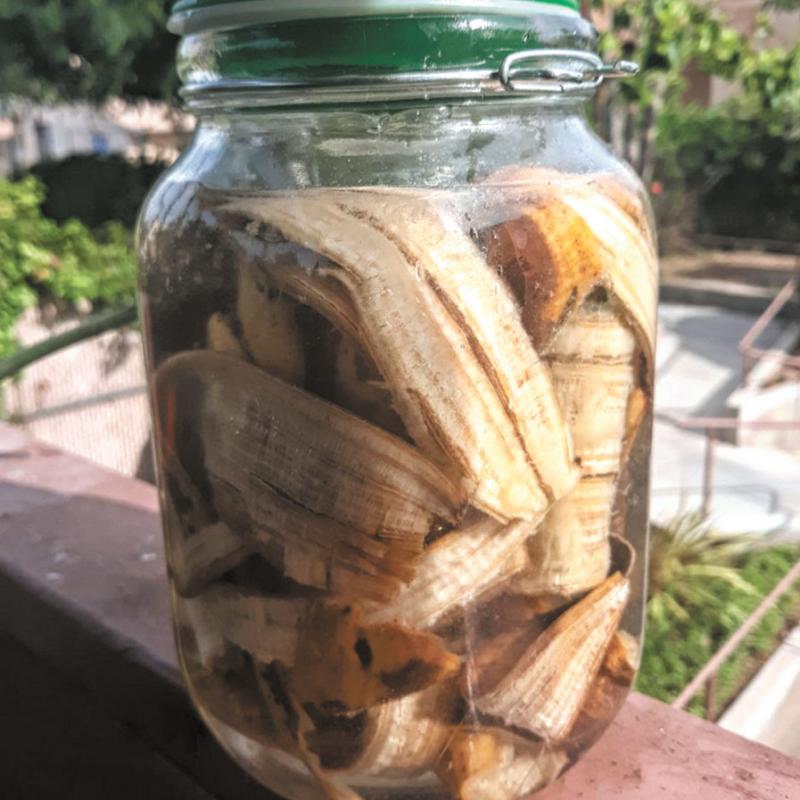The pandemic and isolation are causing many people to “go bananas,” because the phrase “going bananas” probably comes from the earlier idiom of “going ape,” meaning acting crazy or wild as apes sometimes do.
Bananas are unusual in many ways, not the least that bananas, like watermelons, botanically speaking, are actually berries, which develop one flower with one ovary and often several seeds. Yes, bananas have seeds, but they are so small and edible that we forget about them.
Because of the oil in them, rubbing the inside of a banana peel on your skin will reduce the itching from mosquito bites and poison ivy. You can even use banana peels to polish silver by rubbing it with the inside of the peel.
The scientific name for bananas is Musa sapientum, which translates as “fruit of the wise men.” And you are wise, indeed, to use banana peels as fertilizer.
Banana peels are good for gardens because they contain 42 percent potassium (abbreviated to its scientific name K), one of the three major components of fertilizer along with nitrogen (N) and phosphorus (P) and shown on fertilizer labels as NPK. In fact, banana peels have the highest organic sources of potassium.
Potassium aids plants in moving nutrients and water between cells. Potassium strengthens plants' stems and also fights off disease. It is especially important to creating flowers, and even makes fruits (and berries!) taste better. Potassium will even make your plants more resistant to drought. Without enough potassium, plants grow poorly in general. It even increases the protein content of your plants.
In short, potassium helps plants grown for their fruiting and flowering, including rose bushes and fruit trees, rather than plants grown for their foliage, such as spinach, lettuce and Swiss chard.
Banana peels are good fertilizer because of what they do not contain. They contain absolutely no nitrogen. While plants need nitrogen (remember the NPK on fertilizers), too much nitrogen will create lots of green leaves but few berries or fruits. This means potassium-rich banana peels are excellent for plants like tomatoes, peppers or flowers. Banana peels also contain calcium, which prevents blossom end rot in tomatoes. The manganese in banana peels aids photosynthesis, while the sodium in banana peels helps water flow between cells. They even have traces of magnesium and sulfur, elements that help make chlorophyll.
You can simply bury banana peels near your plants where they will release their nutrients as they break down. You can also brew banana peel tea by putting banana peels in a jar and covering with water. Let this steep for a week or two and you will have a nutrient-rich liquid fertilizer. Unlike powdered or solid fertilizers, this liquid fertilizer goes directly to the roots and helps the plants immediately. Toss the used peels into a compost heap or bury them in the garden
Make some banana peel tea, and your garden just might go ape for it.





















































